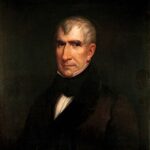William Henry Harrison’s presidency represents one of America’s most significant governmental failures. The Harrison presidency crisis began immediately after his March 4, 1841 inauguration. His administration accomplished virtually nothing during its brief 31-day existence.
The Unfulfilled Promises
Harrison campaigned on extensive Whig Party reforms and economic restructuring. He promised to reverse Jackson’s policies and strengthen congressional authority. ⚠️ Instead, his presidency delivered zero substantial legislation or administrative changes. His lengthy inaugural address outlined ambitious plans that never materialized. The new president fell ill within weeks, leaving critical appointments unfilled.
Constitutional Confusion
Harrison’s death on April 4, 1841 triggered America’s first succession crisis. The Constitution provided unclear guidance about vice presidential succession powers. Article II left ambiguous whether Tyler would become president or acting president. 📊 This uncertainty paralyzed government operations for crucial weeks.
Administrative Breakdown
The Harrison presidency crisis exposed serious flaws in executive transition planning. Cabinet members lacked clear authority during the president’s illness. Important diplomatic and domestic issues remained unaddressed. 💰 Economic policies promised during the campaign stalled completely, disappointing supporters and financial markets alike.
Impact:
The Harrison presidency crisis created lasting constitutional and political consequences that shaped American governance permanently. This brief administration’s failure established dangerous precedents for executive weakness and succession uncertainty.
Constitutional Precedent Problems
Tyler’s assumption of full presidential powers sparked fierce constitutional debates. 🔥 Congress challenged his authority, calling him “His Accidency” rather than legitimate president. The succession crisis revealed critical gaps in founding documents. Future amendments would address these ambiguities, but immediate damage was severe. Political parties questioned executive succession procedures for decades afterward.
Whig Party Destruction
The failed Harrison presidency crisis devastated Whig political prospects nationally. Party unity collapsed as promised reforms never materialized. 📉 Congressional Whigs distanced themselves from Tyler’s subsequent decisions. Internal conflicts weakened the party’s effectiveness for years. Conservative and progressive Whig factions blamed each other for the disaster.
Governmental Instability
Federal operations suffered significant disruptions during the transition period. Diplomatic relations with Britain and other nations remained unresolved. Domestic economic policies lacked consistent leadership and direction. 🌍 International observers questioned American governmental stability and competence. The crisis demonstrated how easily constitutional ambiguities could paralyze federal authority. Modern succession procedures trace directly to lessons learned from this catastrophic presidency.
